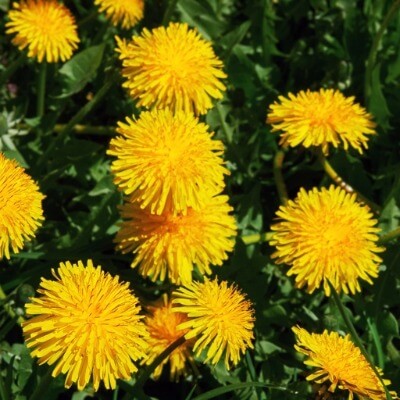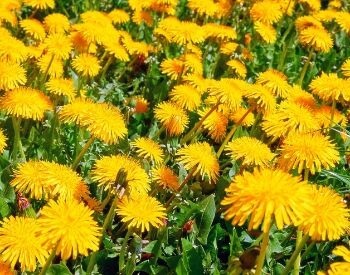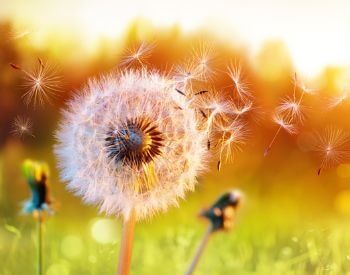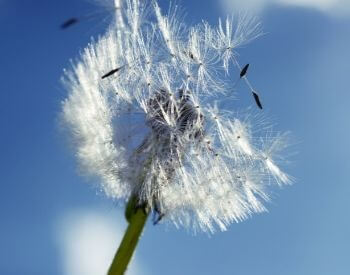
- Plant Name: Dandelion
- Plant Type: Flowering Plant
- Plant Genus: Taraxacum
- Plant Family: Asteraceae
- Plant Order: Asterales
- Type Species: Taraxacum officinale
21 Dandelion Facts for Kids
- Dandelion is the common name for several flowering plants in the Taraxacum genus.
- The Taraxacum genus is complex and has a rough estimate of about 250 different species of dandelions.
- The type species for the Taraxacum genus is the common dandelion (Taraxacum officinale).
- Fossil evidence suggests that dandelions appeared in Eurasia around 30 million years ago.
- Dandelions are found on every continent around the world, except Antarctica.
- Dandelions are a non-woody (herbaceous ) vascular flowering plants.
- Dandelions are perennial plants, that means they continuously grow year after year without needing to be replanted.
- Dandelions have tap-roots, that means their root system has one dominate root. All the other roots are connected to the dandelion’s dominate root and sprout laterally.
- The stem of a dandelion is typically green, hollow and doesn’t have any leaf appendages.
- The leaves of a dandelion come out of its base, they are usually between 2 and 10 inches in length. However, some species can have leaves that are longer.
- A milky latex substance is released from the stem and leaves of a dandelion when damaged.
- The color of a dandelion flower head varies by species but is usually a yellowish to orangish color.
- Dandelion species can reproduce one of two ways, through pollination or apomixis.
- Dandelion species that use pollination are depended on pollinators like bees.
- Dandelion species that use apomixis can produce seeds on their own and don’t require pollinators.
- The Japanese dandelion (Taraxacum albidum) is an example of a species that uses apomixis.
- Dandelion species spread their seeds using the wind. Their seeds develop with a pappus that allows them to be carried off by the wind and germinate far away from the parent plant.
- Every part of a dandelion is edible and nutritious. It’s a common herbal remedy in many countries.
- Yellow dye can be created from the yellow petals of a dandelion.
- The Kazakh dandelion (Taraxacum kok-saghyz) is cultivated for its ability to create a high quality rubber.
- The common dandelion is considered a harmful weed. It’s a common weed that grows in lawns and is a primary target in most consumer and commercial weed killers.
Dandelion Pictures

A picture of dandelions in the grass.

A picture of a dandelion releasing seeds.

A picture of dandelion seeds in the wind.
Additional Resources on Dandelions
- Dandelion (Taraxacum officinale) – Discover more cool facts about dandelions on the University of California website.
- How to Remove Dandelions – Learn how to remove dandelions from your lawn on the Bob Vila website.
- Consuming Dandelions, Benefits and Side Effects – If you’re thinking of using dandelions as a herbal medicine you’ll want to first read this WebMD article.
- Dandelions – Wikipedia – Read more about dandelions and the Taraxacum genus on the Wikipedia website.
